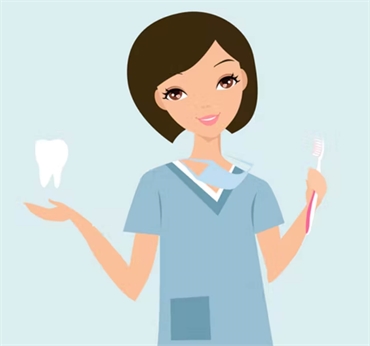What is the person who cleans your teeth called?
May 07, 2022

At the dental office, why does a different person clean teeth instead of the dentist? And what is the person who cleans your teeth called? It is the dental hygienist, and they play one of the most important roles in the dental office.
What is a dental hygienist?
In a dental office, most cleanings are performed by a dental hygienist and the hygienist might be the person patients see most often and spend the most time with. That is actually a good thing. A dental hygienist completes advanced schooling and their skills go far beyond simple dental cleanings. The hygienist is also able to spot issues with a patient’s mouth, alert the dentist to potential problems, and provide patient education on unique risk areas and proper at-home care. Additionally, the hygienist records important information, like gum measurements, to track and compare any changes in oral health. They know how to catch warning signs of impending problems like tooth cracks, failing dental work, and oral cancer. Overall, the hygienist is equipped to be the perfect connection between a patient and the dentist.
What are the different types of dental cleanings?
There are different types of dental cleaning based on what they find during a dental exam. Here are four types of cleanings performed by a hygienist:
1. Prophylaxis Dental Cleaning
This is something every patient should be familiar with. Before a visit with the dentist, the hygienist cleans the teeth to remove any harmful buildup. This procedure involves special tools and equipment along with rigorous training and education. Consistent professional teeth cleanings are a great way to lower the risk for cavities and gum disease.
2. Scaling and Root Planing
Known also as deep cleanings, the scaling and root planing cleaning is meant to clean both the teeth and the gum pockets to help treat gingivitis and periodontitis. The hygienist can complete most deep cleanings for the early stages of gingivitis in just one appointment. For more advanced symptoms of periodontitis, it may take several appointments and local anesthetics to get the whole job done. Scaling involves removing plaque and tartar from the surface of the tooth as well as the gum pockets below the gumline. Root planing is a process to smooth the tooth root to prevent further buildup and help the soft tissue reattach to the teeth.
3. Periodontal maintenance cleaning
If periodontal disease is a common and chronic problem, the patient may have to return more often for periodontal maintenance cleanings. The maintenance cleaning involves more scaling and root planing if needed.
4. Gross debridement cleaning
This is the most heavy-duty teeth cleaning meant to clean teeth with excessive amounts of tartar and plaque. A gross debridement cleaning is often reserved for individuals who struggle or neglect to maintain an oral hygiene routine. It might also apply to patients who have avoided visiting the dentist for an extended period. Since plaque hardens into tartar, and tartar hardens with time, the hygienist must use a more robust set of tools to remove the debris before performing a prophylaxis cleaning.
In the past, dentists were responsible for performing all of these tasks and more. They didn’t have dental assistants or hygienists. Today, most dental offices have assistants and hygienists to help streamline the workflow and allow them to put more patients on the schedule. And the beauty of seeing the dentist and hygienist regularly is receiving even better and more consistent preventative care.

